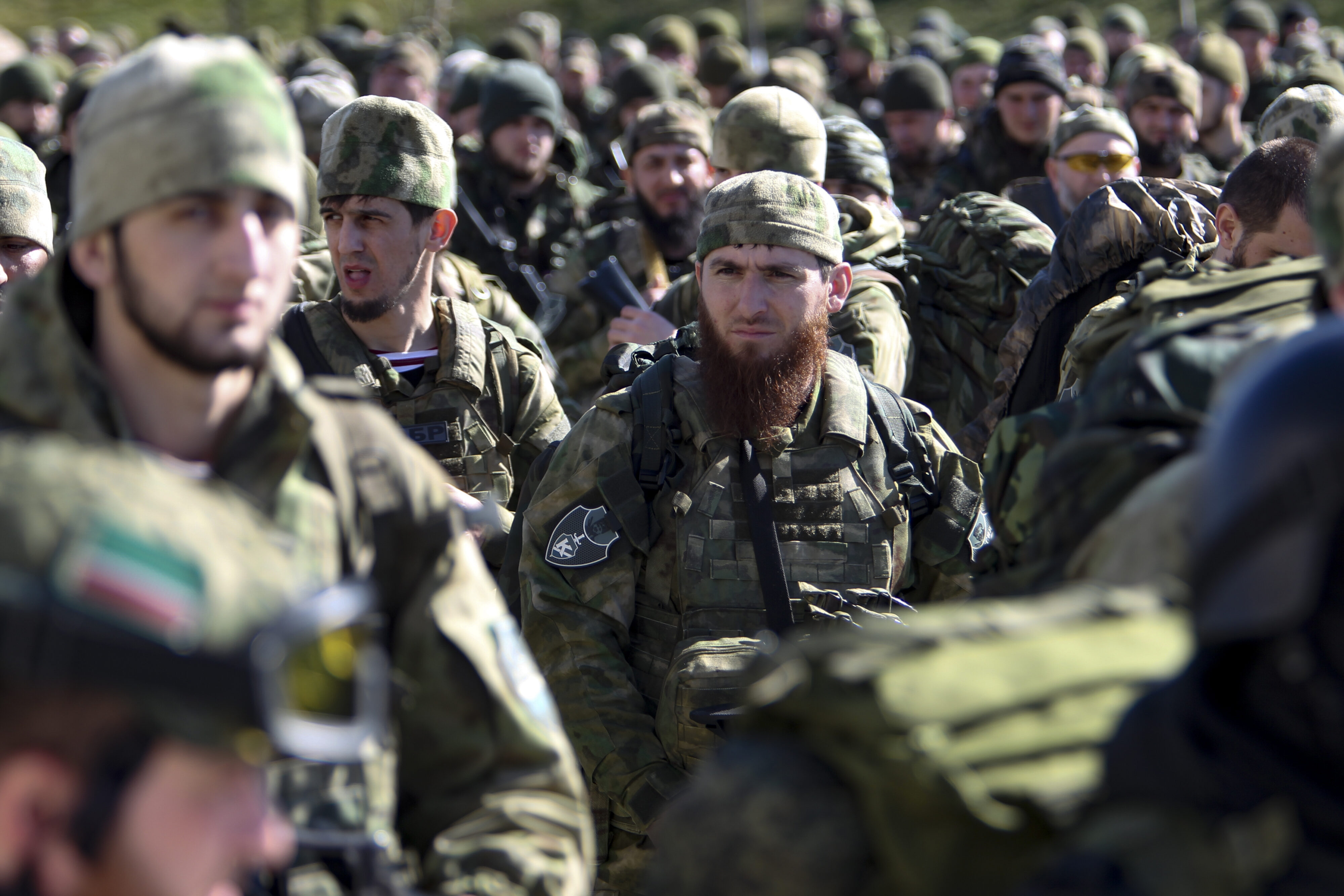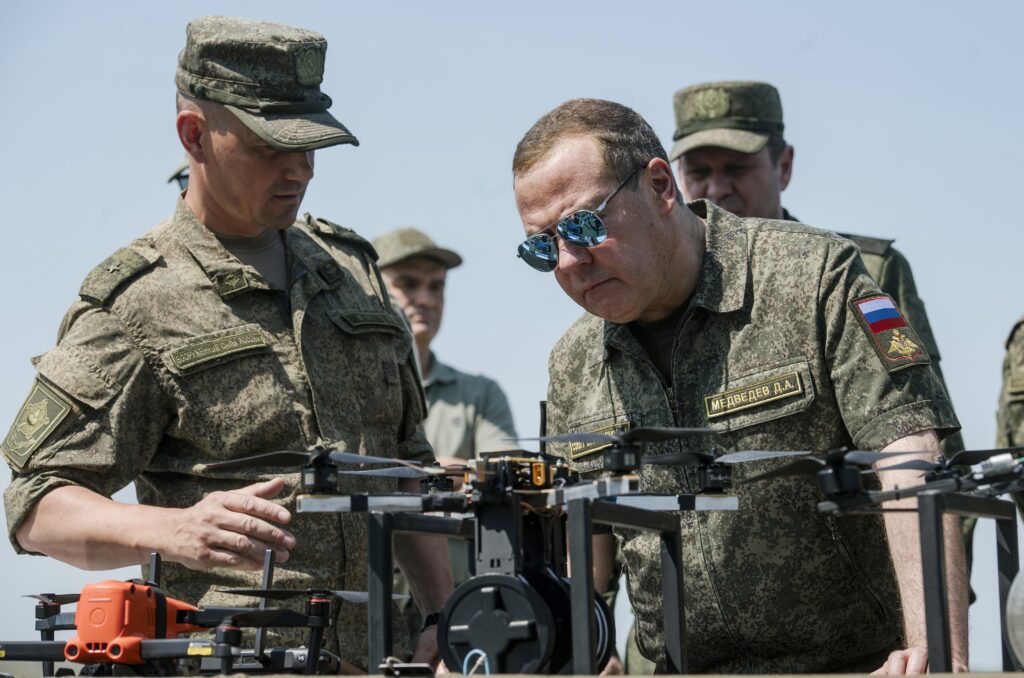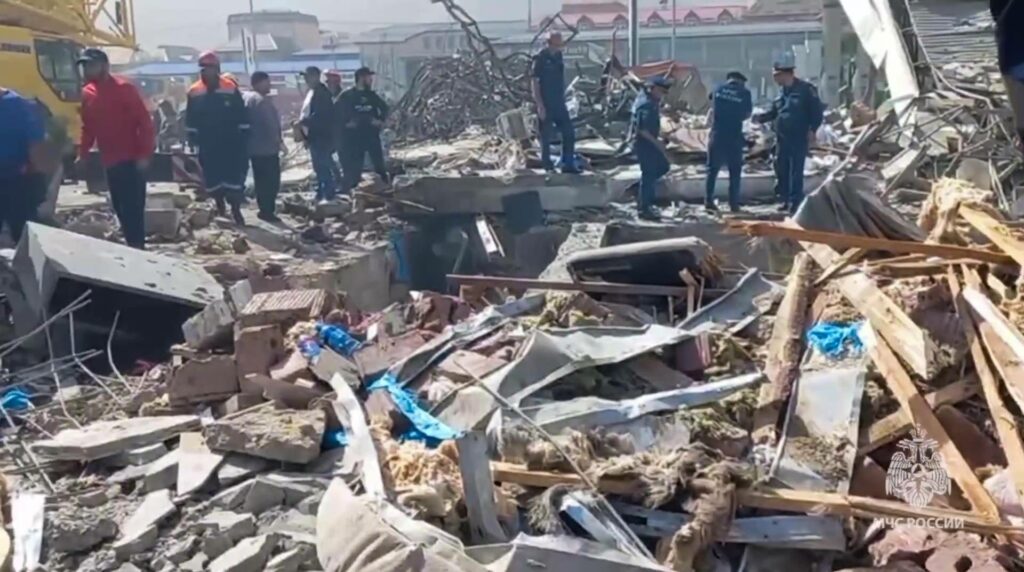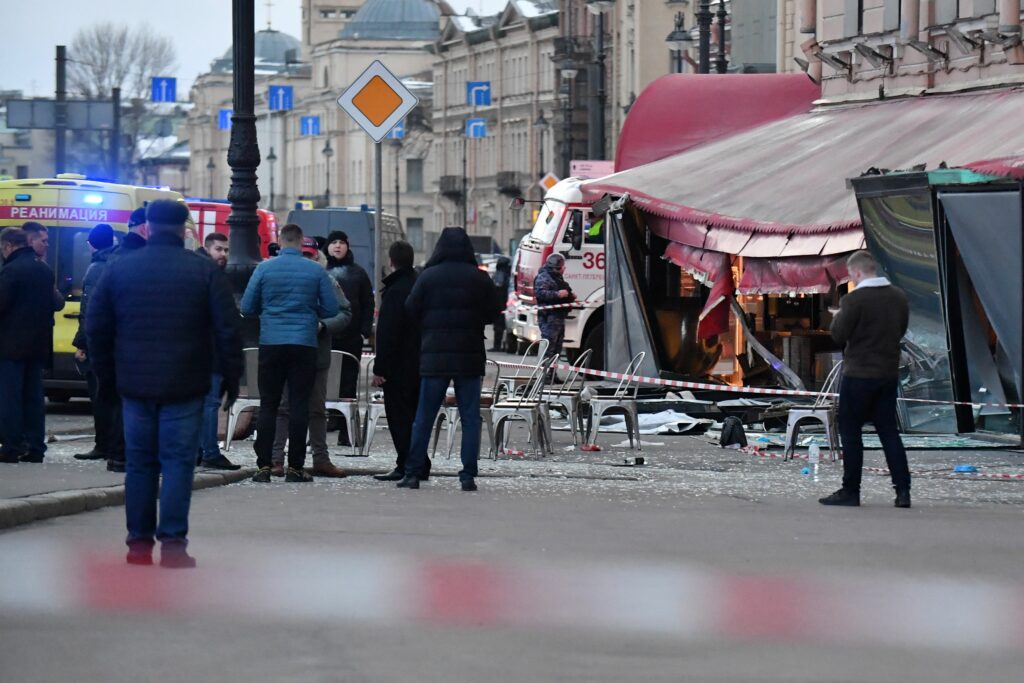For Chechnya, the past year has upended the status quo of the Kadyrov regime, radically recasting relations between the governing elites, the Chechen opposition, and the wider Chechen public. 2022 began with an aggressive campaign to crack down on the relatives of dissidents. Then in February, Kadyrov prepared for and helped launch the invasion of Ukraine. It is hard to overstate the financial, political, and social impact the war has had on the North Caucasus in general and Chechnya in particular, massively straining state-society relations.Unsurprisingly, the war has dominated the 2022 political agenda, also serving as the central factor in opposition and societal trends.
Kadyrov has been seeking to secure his position, maneuvering for status in multiple political arenas and clamping down at home. The Chechen opposition, meanwhile, has been reinvigorated, seeing Russia’s invasion as a window of opportunity to restart their independence struggle with renewed fervor. Fresh energy can be found throughout the entire international opposition network. Back home too, society has generally grown more willing to confront the Kadyrov regime, in small and large ways. Altogether, these dynamics show a shift in the status quo in the overall landscape of Chechen politics. In 2023, Ramzan Kadyrov will have to keep his guard up.
Kadyrov maneuvers
The Chechen governor has utilized the wartime disruption to Russia’s political system to enact a multi-pronged, multi-level strategy to seemingly shore up his position and gain kickbacks from the Kremlin in return for his support of the war. He has engaged at local, regional, and federal levels.
At home in Chechnya, Kadyrov has moved to secure the future of his desired dynastic regime. The generational turnover in government has continued. Kadyrov’s daughters, who are currently his only children in office, are slowly gaining more responsibility. Culture Minister Aishat Kadyrova, Ramzan’s eldest, led a delegation of Chechen officials on a tour of occupied Ukraine in October, escorted by her three eldest brothers cosplaying as child-soldiers. Aishat was further representing the Akhmat Kadyrov Fund on this trip, indicating a larger role for her at the regime’s premier financial institution. Meanwhile, the eldest of Ramzan’s sons are developing their profiles. The most significant event was their «participation» in fighting in Ukraine alongside the «West-Akhmat» battalion—one of the newly minted Chechen units for the Ministry of Defense. Additionally, the eldest son, Akhmat, now heads all youth organizations in Chechnya, while the second eldest, Ali, constructs a superficial reputation as a fighter. This cluster of developments are to prepare the eldest son to enter government service, simultaneously building a hypothetical image of Ramzan’s sons as the great fighters Chechen men are idealized to be.
In concert with this generational shift, the regime has instituted a higher level of repression. The crackdown on dissidents’ relatives in January set the tone for the year. According to data collected by opposition movement «1ADAT,» kidnappings have rebounded this year, largely due to May‘s campaign to forcefully refill the «volunteer» ranks of the «Akhmat» spetsnaz group in Ukraine and September‘s secret mobilization. The total reported figure will likely finish at around 1000 abducted individuals this year. To close out the year, security services from Grozny conducted raids in Urus-Martan, the republic’s third-largest city. This crackdown was retribution against local residents for laughing at two kadyrovtsy who brawled on December 10. A contingent of 500 siloviki rounded up men, including one as young as fifteen years old, to be deployed to Ukraine—the fate of these men remains unconfirmed.
Regionally, Kadyrov was largely absent during the first half of the year, instead prioritizing federal politics. Kadyrov was, however, able to finally solve part of a conundrum for federal North Caucasus policy: Ingushetia’s Batalkhadzhintsy brotherhood. Ingushetia has been pulled back-and-forth between Moscow and Grozny, with neither side able to effectively co-opt Ingushetia’s socio-political elite. Raids against the Batalkhadzhintsy forced them to seek refuge, and patronage, from Kadyrov in Chechnya. The price for this protection from the Ingush authorities was to form a volunteer unit to fight within Kadyrov’s «Akhmat» group in Ukraine. This co-opting means that, although the Chechen leader succeeded at achieving a long-time regional policy goal, he is unable to wield this newly acquired influence in Ingushetian politics. Besides this pyrrhic victory, Kadyrov has generally maintained his negligence of regional dynamics.
Kadyrov’s engagement at the federal level has been evident from his early, steadfast commitment to Putin’s invasion plans. The largest stratagem has been to reposition his regime and its forces inside of the federal hierarchy, both with respect to identity reaffirmation and acceptance of his officials in Moscow. Kadyrov has placed particular emphasis on Chechens being members of Russia’s «multiconfessional and multinational» state, that his troops are the «vanguard of protectors» of the Motherland «from Kamchatka to Moscow.» Kadyrov also started a dispute with Dmitry Peskov over who should be labeled a «patriot» of Russia, blatantly because the presidential spokesman failed to comment on Kadyrov’s promotion to lieutenant-general. This verbal conflict with Peskov, part of a longer feud between the two, did not affect Kadyrov’s progress gaining status among other federal officials. Throughout the war, Kadyrov has consistently received visits from Moscow officials, with few trips up to the capital. The Duma also recognized the kadyrovtsy’s contributions in Ukraine, a fact that was loudly broadcast across Kadyrov-aligned media. Positive federal attention is not all that the Chechen governor has achieved. Kadyrov’s former security advisor, and one of his main commanders in Ukraine, Daniil Martynov was promoted to be the deputy head of the Ministry of Emergency Situations. This appointment expands Kadyrov’s influence in the federal administration and provides him with an additional agent who can operate around the country. Perhaps the most noteworthy development has been Kadyrov’s partnership with Evgeny Prigozhin, the head of the other major informal security force (Wagner Group) fighting in Ukraine. The two men emerged as staunch critics of the Ministry of Defense’s failures at the end of the year. However, their alliance appears to be one of circumstance, rather than the creation of a faction.
Further, on the literal border of federal policy, Kadyrov has attempted to embark on an ambitious strategy to assert himself in eastern Ukraine. As early as April, following the taking of the Azovstal metallurgy plant, rumors spread that Kadyrov was negotiating for control over occupied Mariupol. Further, Denis Pushilin, head of the self-proclaimed Donetsk People’s Republic, declared that he would rely on Kadyrov’s experience rebuilding Chechnya during the reconstruction of his own region. More recently, the reappointment of former Chechen Security Council head Apti Alaudinov as the deputy commander of the second army of the self-proclaimed Luhansk People’s Republic has in fact led to the apparent integration of these forces with the Akhmat spetsnaz group.
At every level of governance, Kadyrov has acted toward insulating his regime from future trouble, primarily at home and federally as his children transition into the administration. The greater activity surrounding his children suggests that his motivations have expanded beyond acquiring personal power and wealth.
Opposition mobilizes
The February invasion energized Chechen oppositional figures to a level of activity and cooperation that had been absent for a significant time. Galvanized, the pro-independence Chechens have primarily operated along political and military tracks.
Politically, the opposition has embarked to garner support for their independence cause both internally and internationally. They have had some significant victories: the Verkhovna Rada recognized the Chechen Republic of Ichkeria as occupied and the First and Second Chechen Wars as genocides and President Zelenskyy provided what was interpreted as his tacit endorsement for the Ministry of Foreign Affairs recognizing Ichkeria’s statehood. However, their fundamental challenges remain—essentially mirroring those that emerged in the 1990s. Factionalization remains high, with the self-proclaimed inheritors of Ichkeria’s government institutions feuding against the others. Akhmed Zakaev is the prime minister of the exiled Cabinet of Ministers and Zhalaudin Saralyapov heads the Strasbourg-based Ichkerian Parliament; neither institution possesses legitimacy. Zakaev, as the most internationally experienced and most vocal leader, engages the most with European government actors. However, many activists in the Chechen diaspora distrust Zakaev for a variety of reasons, including accused idleness, his claiming undue credit for their work, his opening criminal cases (supposedly under Ichkerian law) against them, and even alleged attempts to have them deported to Russia. Saralyapov’s individual popularity is difficult to gauge, as his parliament seems to predominantly serve as a forum for anti-Zakaev factions. There also remains a theocratic schism between those desiring a constitutional democracy and those calling for the implementation of sharia in a future Chechen state—this split somewhat follows the pro-/anti-Zakaev divide. No real progress has been made to span either of these rifts.
One of the top commanders in the recently reconstituted Ichkerian Armed Forces (IAF), Zumso Amaev, has portrayed Ukraine as an assembly ground for Chechens who support independence. This is an apt description; both the number of Chechen fighters and units has grown significantly, particularly during the past year, since their initial presence in Ukraine in 2014. The original battalions named for resistance legends Dzhokhar Dudaev and Sheikh Mansur have been reportedly joined by the IAF’s Separate Special Purpose Battalion (OBON), the Khamzat Gelaev Battalion, and the «Bezumnaya Staya» Assault Battalion. The latter two units have remained primarily out of public scrutiny. Despite tensions between political factions, the different units have occasionally trained jointly. The IAF also now possesses a new deputy commander-in-chief: Rustam Azhiev, aka Abdul-Hakim Shishani. Azhiev served first in the original Ichkerian Armed Forces before joining Imarat Kavkaz, then led the Ajnad al-Kavkaz jamaat in Syria, eventually retiring to Turkey. The most significant under-reported fact militarily is that those joining the Ichkerian ranks must be cleared by the Ukrainian security services. Since not all prospective recruits are cleared, the Chechens fighting in Ukraine represent only a partial sample of those who would ultimately comprise the independence-seeking force.
The Chechen opposition’s political elite remain fragmented, but the military elite have managed to consolidate. While these different outcomes can be attributed to the fact that the military has a common bottom-line objective—defeating Russia and freeing Chechnya—they remain very distant from achieving this goal. There remains no viable path for soldiers in Ukraine to return their war to Chechnya.
Society reassesses
The cost of critical public expression in Chechnya is steep. After a long year under increasing repression and the increased socioeconomic strain connected to the war effort, the republic’s residents seemingly reached a breaking point. Three acts of resistance, varying in size, but not significance, occurred in the closing months of the year.
The smallest, but not insignificant, act of resistance was an unintentional one. In mid-December, kadyrovtsy from Grozny conducted large-scale raids in Urus-Martan. The understood reason for the crackdown—differing starkly from the official narrative—is that local residents watched a conflict between two kadyrovtsy as entertainment. More than twenty men who filmed the fight, including a fifteen-year-old, were arrested and allegedly sent to Ukraine; their fates remain unknown. The reason for the Kadyrov regime’s severe reaction is twofold. First, weaknesses within the kadyrovtsy ranks do not exist in official narratives, and as such, clashing kadyrovtsy cannot be publicly reprimanded. Accordingly, punishment falls on the witnesses. Second, the kadyrovtsy must not be viewed as entertainment, as a joke. This sentiment by the regime has likely grown since Kadyrov’s occupying forces in Ukraine have been dubbed «Tik-Tok warriors.» This heightens the risk to Chechnya’s residents who witness such conflicts.
Another small act involved violence. Nineteen-year-old Movsar Zakriev conducted a lone wolf attack on a traffic police officer at the end of November, resulting in the deaths of Zakriev, his target, and a bystander, as well as the arrests of Zakriev’s relatives and acquaintances. Zakriev was religiously motivated to carry out the attack, although he was not affiliated with any terrorist organization. This incident demonstrates that at least some of the Chechen youth are prepared to fight the kadyrovtsy and die for their cause. In this case, the religious motivation also supports the argument that the security services’ repressive actions are contributing to radicalization in the region.
The largest act of resistance was the Grozny anti-mobilization protest at the end of September. A group—the exact number of which is unknown—of mothers assembled on the main square in the heart of Grozny, calling on Kadyrov not to send their sons to Ukraine and end the mobilization. This meeting saw severe consequences for the women and their families, with their sons forcefully deployed to the front. Another woman sang the national anthem of independent Chechnya in a nearby market after the protest, for which her relatives were forced to issue a public apology. These events are the best indicators of how locals harbor pro-independence sentiments and how circumstances in Chechnya have degraded to such a point that residents have now decided that public protest is worth the risk.
There, of course, have been rumors of other significant shows of resistance, including residents of Sernovodskoe allegedly flying the independent Ichkerian flag in May and multiple reported formations of armed resistance groups. Unlike other instances, no concrete supporting evidence has emerged to confirm they should be taken as anything more than ammunition in an information war.
The coming year, 2023
Based on these trends, and larger behavioral histories, it is possible to identify some of the dynamics to watch for in the coming year.
The generational shift within the Kadyrov administration will inevitably continue. This will involve further building up the profiles of Ramzan’s eldest sons and assigning more responsibilities to his daughters. In line with this trend, and societal dynamics, repression will only increase—reports of abductions, raids, and severe torture during 2023’s initial days already tentatively confirm this. With respect to the war effort, Kadyrov will likely continue to maximize his investment, but begin to hedge his bet as the invasion continues to fail.
The Chechen opposition’s political elite will apply increased pressure on governments that have recognized Russia as a terrorist state to additionally recognize Chechnya as occupied. The Chechen fighting contingent in Ukraine will also undoubtedly grow. Attempts to reconcile the oppositional schism are doubtful.
For the Chechen populace, it is most difficult to predict the coming year. In all likelihood, societal dynamics will continue on their current erratic path, wherein the stability under severe repression is periodically marked by acts of resistance. Any acts of resistance are unpredictable because they relate to unknowable factors, such as individual radicalization; all that can be said is that the potential underlying conditions for such acts are present and will remain so.










